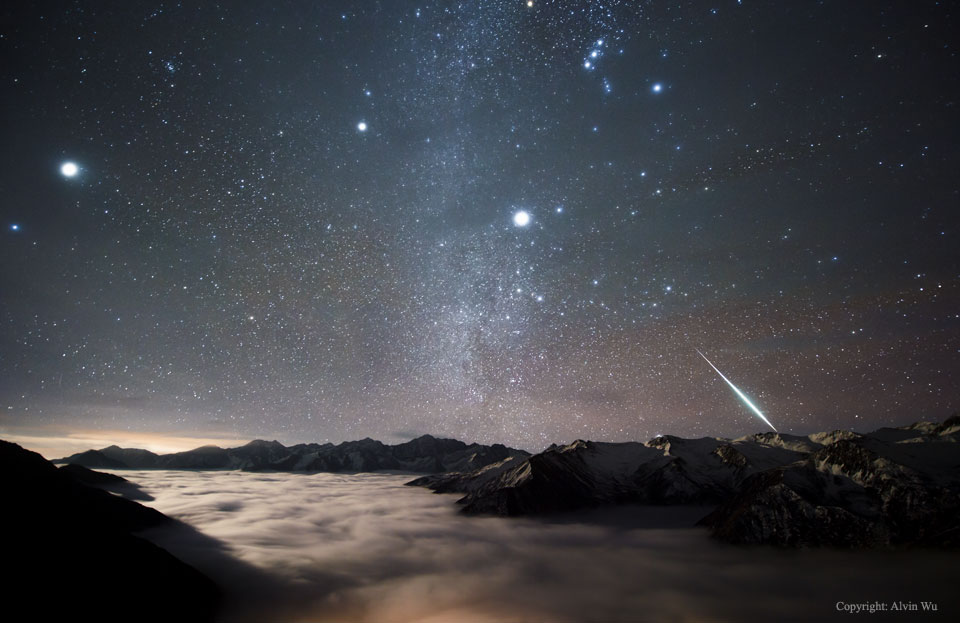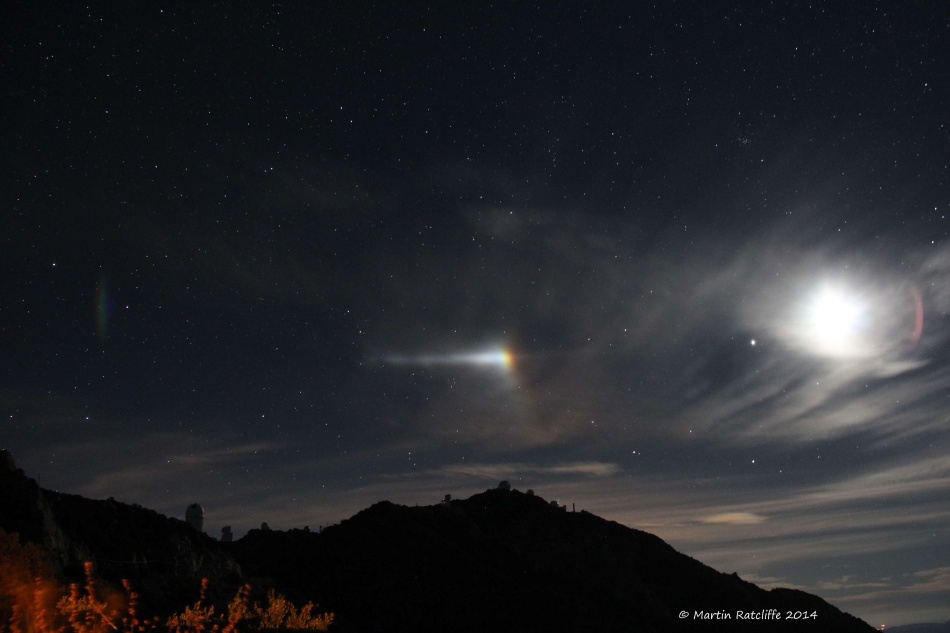Geminid Fireball over Mount Balang

This past Saturday (December 13, 2014) was the Geminid meteor shower! I actually observed this shower for a collective two hours or so from my own house (the magnitude is great where I live - there is hardly anything around to cause pollution). I saw somewhere between 25-35 meteors, which was astounding because I had never seen a single one before. The first meteor I saw I actually thought it was a white bird flying through the night sky, but it disappeared after about a second. Birds don't typically disappear so ¯\_(ツ)_/¯ When I realized it was a meteor I kept watching for more. From 8:00-9:00 PM I only spotted about five or six, and then I went back inside because it was so cold. I went back out at midnight and this is when I started seeing more. So glad I decided to look up!
In this week's APOD image you can see a fireball from the Geminid meteor shower over Mt. Balang in China. The fireball is the white streak of light in the lower right hand corner. At the top of the image you can see Orion clearly and the brightest star in the night sky, Sirius, in the middle. This is truly a beautiful photograph.
-Melanie

